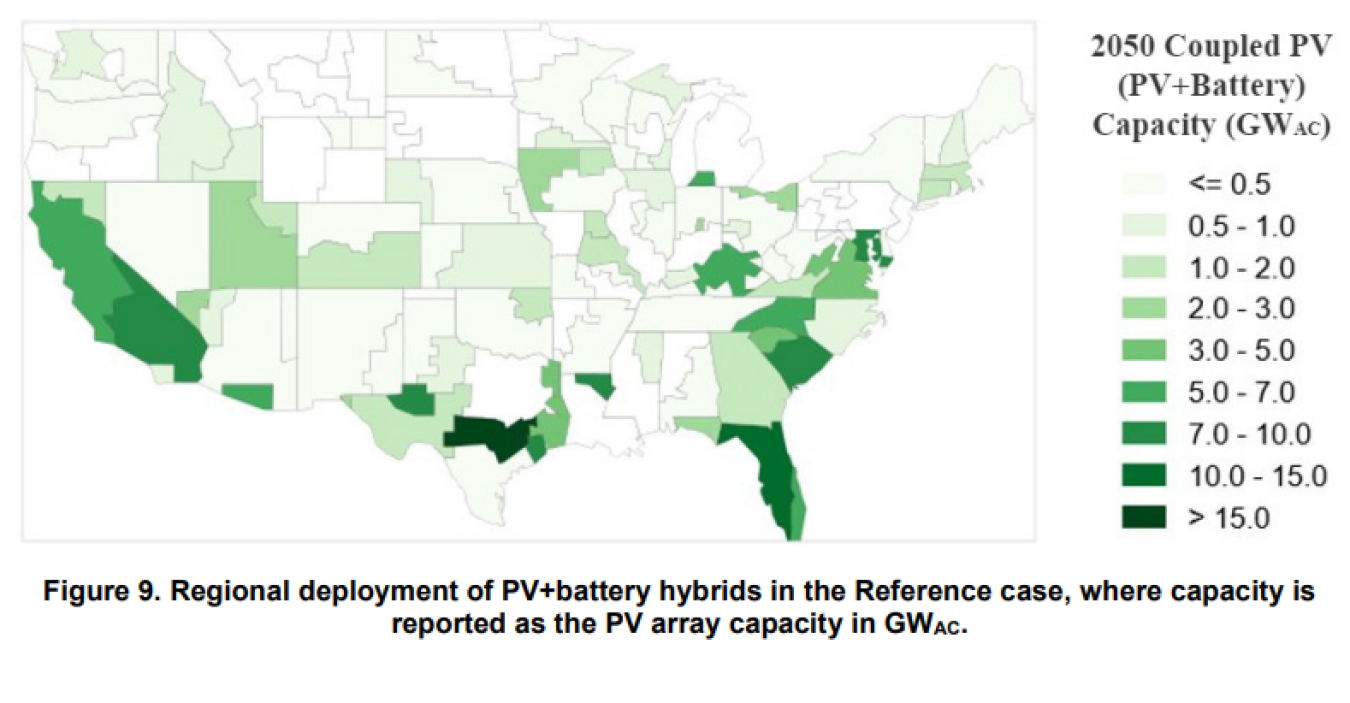Interest in coupled solar photovoltaic (PV) and battery systems has grown due to their ability to receive the federal investment tax credit (ITC) and recent technology cost and performance improvements. Combining these technologies to form co-located or “hybridized” PV+battery systems has the potential to lower costs and increase energy output relative to separate (and similarly sized) PV and battery systems. In this work, we provide an overview of PV+battery systems and demonstrate methods for incorporating them into the National Renewable Energy Laboratory’s (NREL’s) Regional Energy Deployment System (ReEDS) capacity expansion model. Although the methods are applied to a specific model, we anticipate that the approaches described here can be useful for informing PV+battery method development in other capacity expansion models. The implemented method leverages the existing representations of independent PV and battery technologies in ReEDS; therefore, the focus of the methodological development is on capturing and parameterizing the interactions between them for a configuration in which the PV and battery technologies share a single bi-directional inverter. This study further explores the impacts of including PV+battery systems in the ReEDS optimization for the conterminous United States through 2050. In particular, we perform a suite of parametric sensitivities for input assumptions that are uncertain and expected to influence PV+battery deployment levels, including the cost of PV+battery systems relative to independent PV and battery systems; the battery component’s qualification for the ITC; and future cost trajectories for PV and battery systems. From the full set of scenarios, we find that PV+battery deployment could occur throughout the conterminous United States if there are cost savings associated with DC coupling PV and battery technologies (e.g., through shared inverter and balance-of-system costs, reduced financial risk, or increased modularity). Growing PV+battery deployment primarily displaces independent PV and battery technologies, indicating the strong competition between the hybrid and independent configurations comprising technologies with similar performance characteristics. Finally, the total deployment of utility-scale PV+battery hybrids through 2050 intuitively scales with the level of cost savings that can be achieved through hybridization, but it is also highly sensitive to the battery component’s ability to realize value from energy arbitrage (based on grid charging). The level of PV+battery deployment is less insensitive to assumptions about the battery component’s qualification for the ITC, based on the incentive schedule defined in the December 2020 legislative updates.


